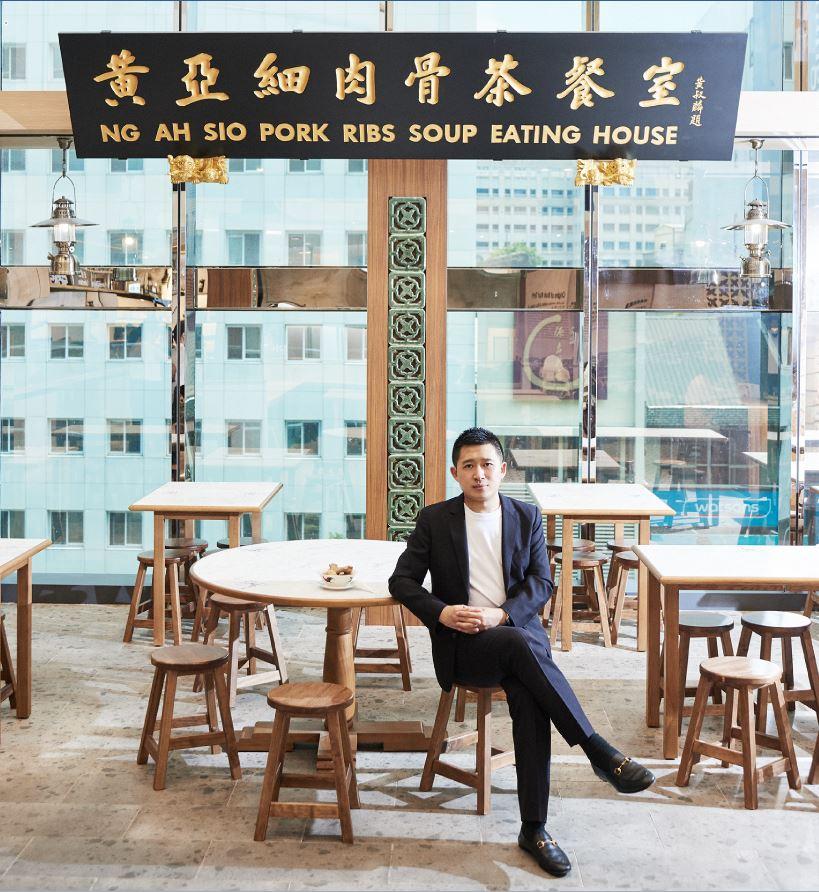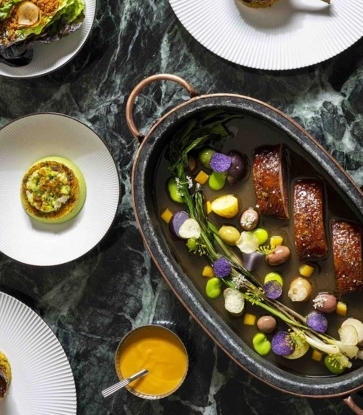In a blink of eye, 2019 has come and gone, bringing with it waves of exciting changes and trends in the food and beverage industry. From zero-waste restaurants to plant-based proteins that bleed — mind-bogglingly — like meat, 2019 has been a ripe year for emergent food trends. We invite seven F&B industry insiders from across Singapore, Hong Kong, Macau and Taiwan to tell us what caught their eye in 2019.

1. More conscious diners
“Our diners are increasingly interested and concerned with what they consume, particularly whether it has been ethically sourced and sustainably produced,” says Wee Teng Wen, founder of the Lo & Behold group in Singapore, which runs three-MICHELIN-starred restaurant Odette and MICHELIN Plate restaurant Esora.
This is also a trend echoed in the wine industry where increasingly health-conscious consumers are putting their money where their mouths are. Bernard Chan, head sommelier of three-MICHELIN-starred Lung King Heen has observed a worldwide uptake in wines and champagne with low sugar content. “Fine-dining restaurants have also started serving low ABV (alcohol by volume) wines as an option and this has trickled down to many more eateries and is increasingly well-received by consumers around the world,” he says.

2. Green is the new black
The rise in conscious diners has led to a huge push in the industry to step up in terms of environmental sustainability, Wee adds, giving examples of the Lo & Behold restaurant group’s efforts such as increasing vegetable-forward dining options and plant-based proteins, doing away with single-use straws and sourcing for eco-friendly disposables for takeaways.
“The top food trend for this year that I was happy to see was around sustainability and air miles. We seem to be moving to a stage where homegrown vegetables and fish is becoming a viable option for restaurants. Quality and variety are finally meeting hype and we are close to a tipping point here where restaurants can reliably tap local producers for some of their produce,” says Loh Lik Peng (pictured right), founder of the Unlisted Collection group which owns a stable of MICHELIN-starred restaurants in Singapore including Basque Kitchen By Aitor, Burnt Ends, Nouri, Cheek Bistro and two-starred Zén.
3. Looking beyond meat
The sidelining of meat-based proteins from a starring role to the supporting cast became more prevalent in 2019, as plant-based diets and alternative proteins became commonplace. "Seeing Burger King adopt Impossible Meat shocked me a little, but I think it’s the start of a big movement," says Loh.
The embrace of plant-based meats across the culinary spectrum was something that pleasantly surprised assistant vice president of F&B at the MGM Cotai in Macau, Sammy Wu, a 28-year F&B industry veteran as well. “I was glad to see plant-based meats become popular in Hong Kong, Macau, Taiwan, Singapore, Thailand and many other Asian countries this year with Western restaurants using things like Impossible Meat and Chinese restaurants using Omnipork to create more innovative types of vegetarian dishes.”

Frank Liu (pictured left), owner of MICHELIN Plate restaurants Orchid and Monsieur L in Taipei observed that more and more global diners are starting to turn to plant-based diets for health reasons, rather than religious ones. “These are the people that are concerned about ecology, sustainability, how to shorten the distance from food production to table. Because of this, more restaurants are moving towards meat-free dining and zero-waste.”
4. Specialty shops and restaurants
“What we’re seeing in Hong Kong are more specialty shops that focus on one item, such as artisanal coffee, yakiniku or tempura,” says Hidemichi Seki, chef de cuisine of two-MICHELIN-starred Tenku Ryugin.
The trend has taken root in Taiwan, too. “In the past year we’ve seen more and more Southeast Asian food brands hitting the Taiwanese market specialising in dishes like bak kut teh (pork ribs soup) and Hainanese chicken rice,” says Henry Tseng, CEO of the Hersing Culinary group that brought MICHELIN-starred restaurants such as Tim Ho Wan and Hawker Chan to Taiwan. He also pointed out the popularity of Japanese nama shokupan, a fresh milk bread, in Taiwan this year, as a trend to watch, along with the rise of specialty coffee roasters and brewers. “There will be more and more choices for Taiwanese consumers – it won’t just be Starbucks anymore,” he says.

5. More global chef collaborations and exchanges
“There have been more events and chef collaborations happening, and this makes for a lot of interesting food conversations and it makes the restaurant industry a lot more fun,” says chef Seki of the Hong Kong restaurant landscape. In Taiwan, Liu has observed that the dining scene has become more dynamic since the launch of the MICHELIN Guide two years ago. “There are many important F&B forums are being held in Taiwan now; more guest chefs are visiting Taiwan, and more chefs are coming here to open restaurants, allowing local produce to shine alongside their restaurants.”
In the next part of the story, these seven industry insiders will share the five trends they are most looking forward to in 2020.



















